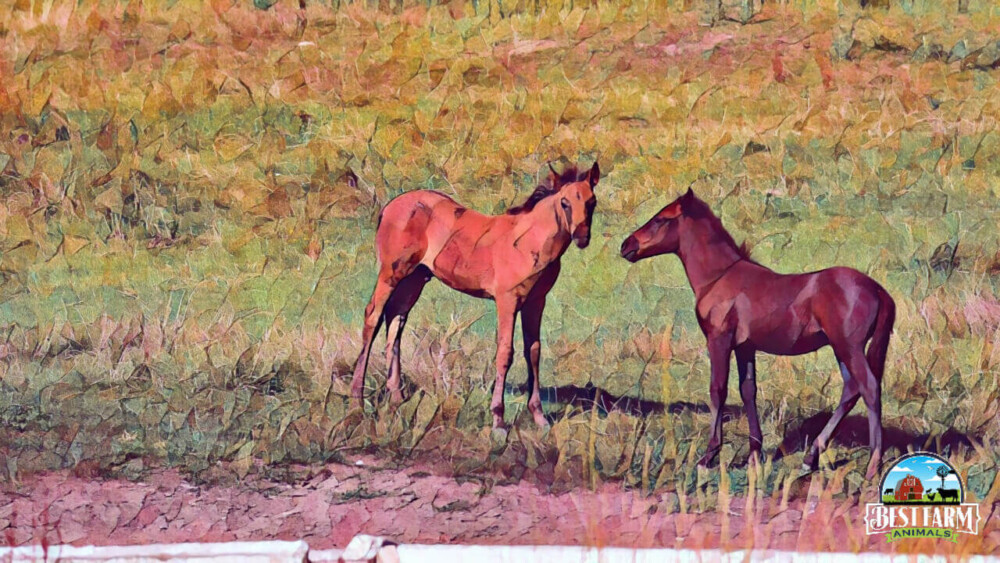How we keep our horses often depends on the overriding philosophy of the yard they’re living in. If all the other horses in the yard are shod, chances are, you will also shoe your horse. In some instances, shoes are necessary to prevent excessive wear and provide stability for the horse. In others, they can be detrimental to your horse’s hoof health.
Should I keep my horse barefoot? If your horse is in good health, has good conformation, and works on soft ground, there’s a good chance he will flourish without shoes. A horse that exercises regularly on rocky terrain may not be suitable for barefoot but could benefit from wearing something other than metal shoes.
Barefoot Horses are often Healthier than Those with Shoes
For most horse owners, deciding to keep their horse shod or barefoot is personal. There are no hard or fast rules stating that one is better than the other. Mostly, it depends on the horse’s needs, the type of work he’s in, and the owner’s preference. Shoes help to strengthen and protect the hooves, preventing them from wearing down too quickly. They can also add traction and improve balance.
On the negative side, metal shoes force the horse’s weight onto the hoof walls. A barefoot horse carries its weight on the whole foot, engaging the frog, sole, and bars of the hoof and the walls.
When a barefoot horse steps down on his foot, the hoof wall flexes wider at the bottom. When he lifts it, it returns to its narrower shape. This action helps to pump blood around the hoof and leg. When metal shoes are fixed to the hoof, they can no longer expand and contract. Instead, it is stuck in a closed position, preventing blood and nutrients from being pulled into the foot.
The flexibility of the barefoot horse’s hoof also improves its shock absorption, limiting concussion damage to his legs.
Being better able to absorb shock and dissipate energy improves the barefoot horse’s ability to withstand injury. In turn, this can lead to “increased performance and longevity.”
Costs Of Shoeing vs. Maintaining the Barefoot Horse
At first glance, keeping a horse barefoot is an excellent way of saving money. A complete set of shoes costs anywhere between $95 and $160,” while a trim costs around $60. Even if you decide to take the hoof boot route, you’ll still make a considerable saving. A pair of Scoot boots costs around $200 but will last much longer than a set of shoes.
Metal horseshoes need replacing every six weeks, whereas a pair of good-quality hoof boots can last anywhere from six months to two years.
Finances should never be the primary motivator for removing your horse’s shoes. Your horse may need its hooves trimmed every three weeks instead of the standard six to eight, doubling the cost. Other costs may include buying better quality forage or additional supplements to support your horse’s hoof health.
A horse that was shod to overcome a conformational defect or injury may find it difficult to adjust to being barefoot, adding costly vet bills to your financial equation.
Hoof Care for the Barefoot Horse
A horse without shoes still needs regular hoof care in the form of trimming. According to a poll of barefoot horse owners on Facebook, around 40% get their horses’ hooves trimmed every four to six weeks.
25% leave them for a little longer, trimming only every six to eight weeks, while a handful of others trim either more or less frequently.
Owners also commented saying, “it depends on each individual horse. Every horse is different and in different environments.” Another said that he hadn’t needed to trim his horse’s hooves for several months, during which they had been “hard as nails.” However, something changed in the environment, and his horse’s hooves suddenly started growing at speed, requiring a full trim twice in three weeks!
In many respects, a shod horse is easier to keep than a barefoot one. Shod horses need a new set of shoes every six weeks, making it easier for you to stick to a regular farrier routine.
Observation and flexibility are central to maintaining a barefoot horse, whose hooves naturally respond to environmental, climatic, and dietary changes.
How to Tell if Your Horse is a Good Candidate for Barefoot Life
For a horse to be comfortable barefoot, it needs good conformation and structurally sound hooves. A shod horse already prone to abscesses and bruises is likely to struggle without shoes. Similarly, a horse with brittle hoof walls that crack or break easily may find living barefoot uncomfortable.
While some of these issues can be addressed with the correct diet and maintenance regime, others can’t.
Before pulling your horse’s shoes, why not have a chat with your farrier? They should be able to advise on the health and durability of your horse’s hooves and help you develop a clear plan for the transition period. Conversely, some horses with hoof issues may benefit from going barefoot. For example, a horse with mechanical laminitis can quickly recover once you remove the shoes.
A Horse’s Breed can Affect its Ability to Live Barefoot
Some breeds of horses seem to adapt more easily to life without shoes. Arabians seem to have particularly strong feet that enable them to travel thousands of kilometers over varied terrain without any lameness. Imaj Zahir is an Arabian gelding with 14 years of barefoot endurance behind him and thousands of kilometers under the saddle.
When he completes a ride, he rarely shows any signs of tiredness, and “there is never any edema/swelling because he is not dealing with the concussion effects of metal shoes on his feet.” Nor does he suffer from an elevated heart rate due to “the stress of concussion and lack of circulation and shock absorption.”
At the other end of the scale are the Thoroughbreds. Racehorses are bred for speed and conformation, and hoof strength is often overlooked. As a result, says farrier Dave Scheffel, “Most modern-day Thoroughbreds’ walls are thin, [and] their feet tend to be on the brittle side.”
Despite their genetic predispositions, both Arabians and Thoroughbreds can live and compete barefoot. Scheffel believes that, although Thoroughbreds don’t have the best feet, “most of their issues can be easily managed with good planning and proactive farrier work.”
Environment is Critical for the Barefoot Horse
If your horse lives in a manicured pasture of soft grass and forgiving ground, his chances of working barefoot on the road are minimal. Ideally, a barefoot horse should live in the same conditions as he works, so if he spends his turn-out time on a rocky mountain, he’ll perform much better on rough terrain than a horse living on a grass pasture.
A barefoot horse living on frequently soft or wet ground will struggle to toughen up his feet sufficiently to work on rugged, rocky terrain. However, if he’s primarily working in a sand arena, he may cope just fine.
Going Barefoot can be Temporary
If you’re not sure that your horse will excel barefoot, but you’re still tempted to try it, you could remove his shoes in winter and replace them in the summer if the transition proves too uncomfortable.
For many horses and their owners, winter is a time of rest. The cold weather and accompanying snow can make outdoor exercise virtually impossible. Metal shoes tend to collect snow, facilitating the formation of slippery balls on snow inside the hoof. On the other hand, a naturally balanced foot has a concave sole and dense horn that sheds ice and snow quickly.
Alicia Harlov, a full-time hoof care provider in Northeastern Massachusetts, recommends removing shoes for the winter.
“Pulling shoes over the winter is also a great way to get ahead of nagging pathologies (diseases or conditions) that we often chase throughout the rest of the year,” she says.
It also allows owners to observe wear patterns and note any changes in movement or growth. A farrier can adjust the trim according to these observations, giving the horse’s hooves the chance to recover naturally. Spending a few months barefoot also gives the hooves time to rest. Harlov says this is beneficial to the back half of the hoof, known as the caudal. It also gives contracted heels a chance to relax and promotes the healthy growth of the frog.
In addition to removing shoes during the quieter winter months, I know of several owners that only shoe their horses for specific events.
Moolmanshoek Endurance Horses in the Free State of South Africa shoe their horses for long trails and endurance rides, but they run barefoot on the mountains the rest of the time.
This approach enables those horses to develop strong, natural feet while giving them the protection they need when their feet wear faster because of an increased workload.
Another option is to keep your horse barefoot in the field but use hoof boots when riding on roads or rocky terrain. This would give him support and protection when needed while giving his hooves a chance to develop and strengthen naturally.
Common Problems with Barefoot Horses
When issues arise from a horse being barefooted, they are usually the same issues other barefooted horses face. Common problems with barefooted horses usually arise from the hooves being trimmed too deeply. Hooves may not be strong enough and can chip, have flares, and abscesses in the hoof. Owners also face criticism, questions, and doubters who don’t understand or know how barefooted horses.
Overly Trimmed Hooves cause Sensitivity
After every trim, your barefoot horse should walk away sound. A little discomfort or sensitivity on hard ground is likely for the first couple of days, but anything more than that points to an excessively aggressive trim.
Some farriers and barefoot trimmers trim a barefoot hoof the same way they would prepare a hoof for shoeing. This process involves removing the bars, rasping away some of the sole, and tidying up the frog.
The ideal barefoot trim should leave those features untouched and focus primarily on trimming back the hoof wall and beveling it.
An overly trimmed hoof is bound to be sensitive, especially if too much is taken from the sole. The depth of the sole is critical for the barefoot horse and should be encouraged to grow as thick as possible.
The endurance horse we mentioned earlier, Imaj Zahir, has 15 mm of sole, whereas a newly barefoot horse may have only 5mm of sole to protect him.
#2 Hooves Chip on Newly Barefoot Horses
When a horse first goes barefoot, there is usually some chipping of the outer wall. Such breakages are particularly evident while the nail holes are still growing out.
Chipping isn’t necessarily bad as it helps remove the unhealthy part of the hoof and stops once the horse begins to adjust.
#3 Abscesses can Occur in Barefoot Horses
Removing a horse’s shoes may lead to abscesses in one or more feet. This condition isn’t necessarily common, but you should be prepared for it.
A horse with a hoof abscess usually appears chronically lame, refusing to put any pressure on the abscessed foot. Soaking the foot with Epsom salts can help to draw the abscess out, after which the horse will be suddenly sound again.
Not all abscesses cause lameness. My mare injured her coronet band a few months, and I could see signs of repeated abscesses throughout the hoof, but at no point was she lame.
When I consulted my vet about this, he explained that this was due to her being out on pasture 24/7, allowing her to perform natural movements that helped facilitate healing.
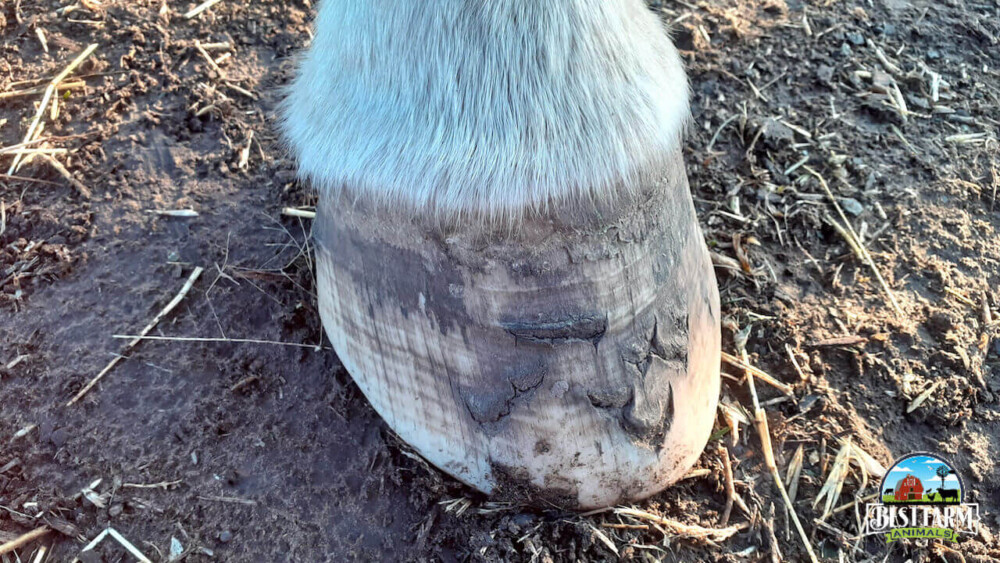
#3 Careful Trimming can Help Heal Cracked Feet
Some horses are more prone to cracked walls when barefoot than when shod. Cracking often happens when the outer wall is not beveled sufficiently to distribute the pressure evenly. Leaving a barefoot horse’s toes too long increases the pressure on the wall at the toe of the foot, increasing the risk of cracks.
Trimming back the toe and beveling the outer wall can help prevent cracks from occurring. You can also use techniques to prevent the damage from worsening and traveling further up the hoof.
Using the edge of your hoof rasp, scour a shallow line into the hoof at the top of the crack. The line should be perpendicular to the crack, as shown in the image below. This action helps distribute the pressure throughout the healthy hoof wall, stopping the damage from developing further.
Nutrition is also vital. A balanced diet that contains plenty of biotin, lysine, zinc, and copper will nourish the feet, making them less brittle and susceptible to cracking.
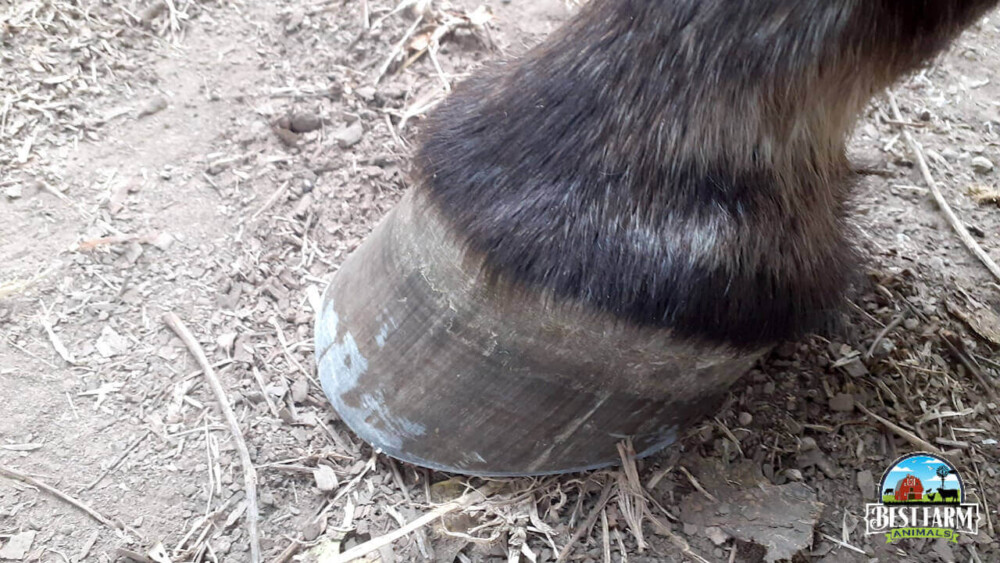
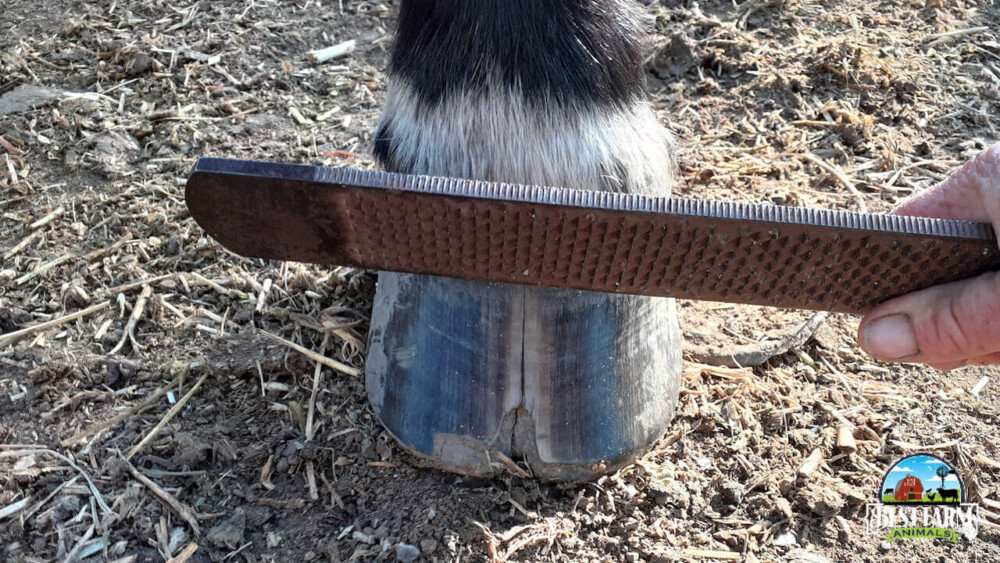
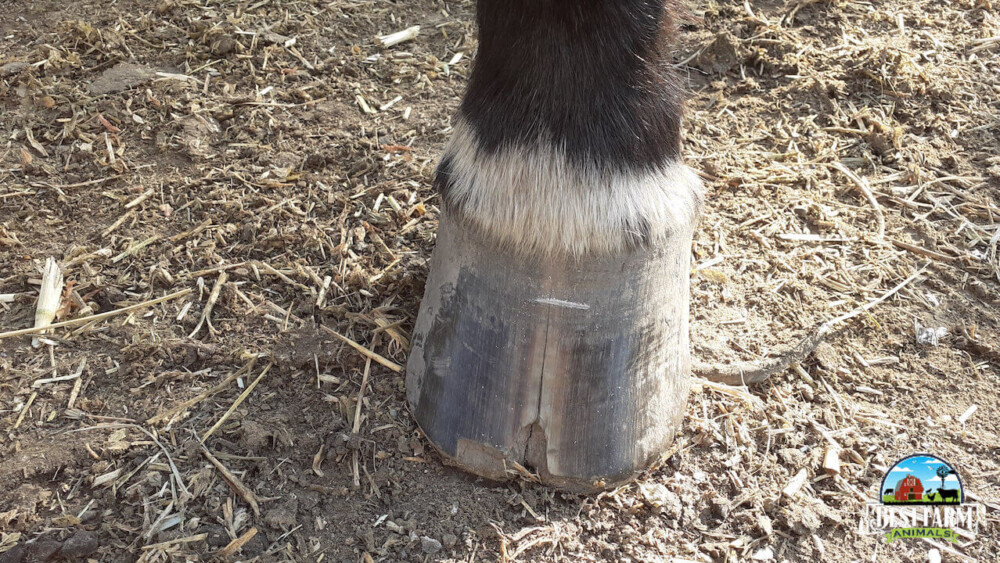
#4 Getting Rid of Flares with Trimming
Flares are “a type of hoof-capsule distortion” caused by the wall horn pulling away from the coffin bone. Flares occur when too much pressure is exerted on the wall rather than the whole hoof.
Trimming away flares helps to reduce that pressure, allowing the new wall to grow in a way that sees it “connected to the coffin bone by healthy, tight laminae.”
Conclusion
Nearly all horses can go without shoes and live a comfortable life. They can compete and be ridden on roads and over rocky terrain, but only if maintained correctly. Horses living on soft pastures may find it more challenging to adapt to being barefoot and may only work comfortably in soft sand arenas.
Going barefoot isn’t for everyone. Horses with chronic hoof conditions may need therapeutic shoeing to keep them sound. Horses living in persistently wet conditions may be unable to harden their hooves enough to enjoy life without shoes.
The decision to keep your horse shod or barefoot primarily depends on personal preference and what’s best for the horse. Owning a barefoot horse may be cheaper, but not if it involves frequent vet bills and expensive treatments. Keeping a barefoot horse also requires diligence, observation, and regular maintenance.
My Favorite Equine Resources For Horses and Donkeys
This list contains affiliate products. Affiliate products do not cost more but helps to support BestFarmAnimals and our goal to provide farm animal owners with accurate and helpful information.
Squeaky Chicken Toy is hilarious to watch and the horses love it! It’s not super tough so keep it away from dogs.
Dewormer with Ivermectin: I use this for my horses and my goats. Duvet makes a great dewormer. I switch between the Ivermectin one and one like this one so the worms don’t get immune to it.
Manna Pro Apple Flavored Nuggets are a delicious smelling treat that my horses go crazy over.
Equinity Amino Acid Supplement for Horses makes a big difference for any horse that’s struggling with arthritis, hoof issues, or just generally. It’s great for older horses who can’t absorb all the nutrients in their food as well!
Manna Pro Weight Accelerator helps older horses gain weight and stay healthier! This was especially helpful when one of my older horses lost weight over the winter and helped her regain her weight over the summer!
Farnam Fly Control goes on the horse or donkey and will keep the flies off your sweet pet. It makes horses way more comfortable and will keep sores from getting infected as well.
Wound Kote protects sores and wounds. It acts as an antiseptic and helps wounds heal faster. It works on both my horses and goats.



